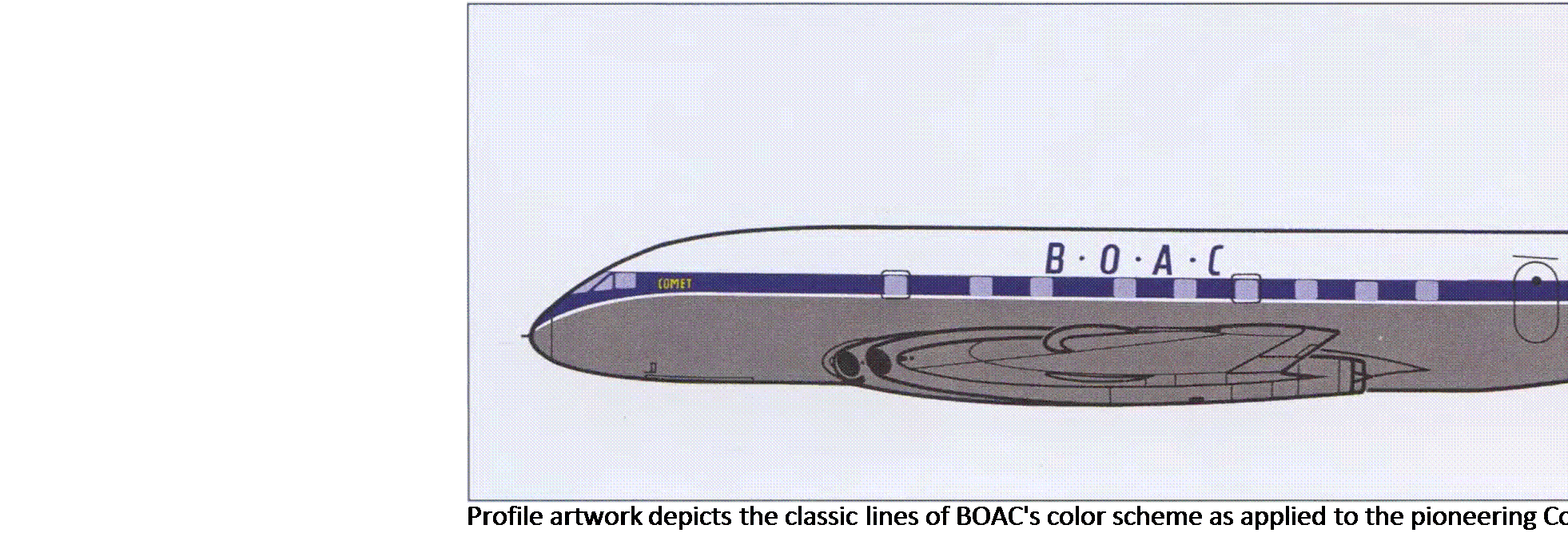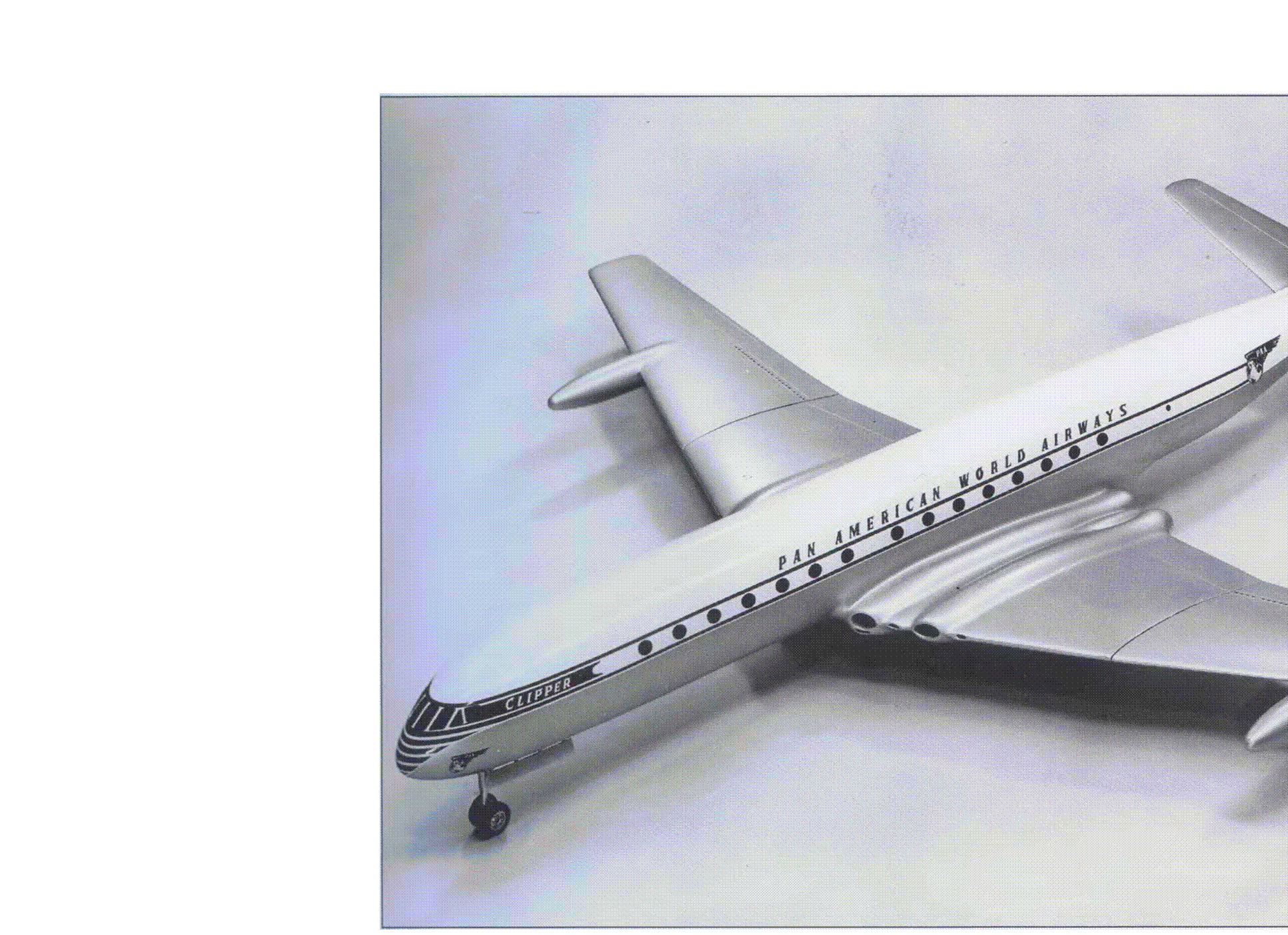BOAC Comet 1: From Triumph to Tragedy
The riches-to-rags story of Britain’s de Havilland Comet 1 has been told countless times. A sleek new airliner powered by turbojet engines is unveiled to an expectant industry in England in 1949. By the summer of 1952, this acclaimed new jetliner is in passenger service on routes throughout Europe and Africa, and a postwar world exults in wonderment at this new technological breakthrough. The joy is short-lived, however, when in January 1954, a Comet 1 disintegrates in midair after taking off from Rome and plunges into the Mediterranean Sea with the loss of all passengers and crew.
Before a curious and grieving world can even understand what happened, a second Comet 1 crashes three months later also after taking off from Rome and under the same mysterious circumstances with the loss of all on board. This was the fifth crash of a Comet in its first two years of commercial operation, and now the race is on to find the technical culprit that is destroying Britain’s newest, most modern, and most celebrated airplane. With the second inflight breakup accident comes the immediate grounding of the type, and a loss of face and confidence in Britain’s aviation supremacy. What
kind of insidious inflight occurrence caused two of the world’s most modern jet aircraft to experience catastrophic structural failure and literally explode in midair? Was it a bomb? Was it human error? Or was it possibly a design flaw in the aircraft itself?
After complex underwater salvage operations aided by the Royal Navy recovered major portions of the airframes from both Rome crashes, the Royal Aircraft Establishment (RAE) at Farnborough launched an investigation of never-before-seen proportions. The hunt began for the cause of the accidents with the reconstruction of actual aircraft wreckage on an armature that indicated beyond any shadow of a doubt the airplane had indeed disintegrated in midair. Then an Italian fisherman’s net yielded the “smoking gun” that confirmed the solution to the mystery. A frame from one of the Comet’s square passenger windows found in the fisherman’s net showed that the fuselage had ruptured from metal fatigue at a point near the corner of the window, extending upward to an equally rectangular Automatic Direction Finder (ADF) antenna housing on the top of the fuselage. The rupture caused an explosive decompression of the cabin, leading to immediate catastrophic structural failure of the rest of the airframe.
 |
In historical hindsight, this fact would seem to indicate that de Havilland had not tested its new airplane sufficiently, but nothing could be further from the truth. Knowing full well this airliner would be operating at speeds and altitudes twice that of existing piston – powered aircraft, de Havilland engineers proceeded with fatigue testing of every minute facet of the Comet’s design and construction. With untiring effort, structures were put to the test where engineers attempted to duplicate the rigors of countless aircraft “cycles,” that is the series of structural loads resulting from a takeoff, climb to altitude, descent from altitude, and landing. Exhaustive testing at Hatfield simulated an aircraft service ceiling of 40,000 feet. What couldn’t be duplicated, however, were the severe temperature differentials from sea level to 40,000 feet, and as a result of these accidents, new methods of load simulation were devised at Farnborough for use on future aircraft designs.
With a complete Comet fuselage immersed in a giant tank of water to simulate pressurization forces on the cabin at altitude, patterns now began to emerge that led to the possibility of metal fatigue in the outer skin of the fuselage. When the test cabin itself ruptured inside the water tank, the pattern of metal fatigue was conclusively established. Further study and matching of wreckage fragments from the first Comet lost revealed that the explosive decompression forces were so great that dark blue-black paint from the letter “C” in the BOAC title above the windows was found in a deep gouge on the leading edge of the right wing indicating violent span-wise or lateral impact. This clue graphically showed that the explosive force of the rupture was so great that it exceeded the forward velocity of the airplane at that moment.
As with any aviation accident, tragedy yields information and knowledge so that a particular problem can be avoided in the future. In the case of the Comet, metallurgy techniques, manufacturing methodology, and aircraft skin structural properties were modified to include an integral reinforcing framework built into the
skin itself much like “quilted” aluminum foil used in common households today. Additionally, the passenger windows on all British airliners built after these accidents were manufactured in the shape of an ovaloid to eliminate the smaller-radius corners from which the fatal fatigue cracks emanated on both Comets that disintegrated.
Although the reputation of Britain’s commercial aviation industry was tarnished by the discovery of the design flaw that led to these accidents, de Havilland went back to the drawing board and developed improved and more advanced versions of the Comet which eventually reentered passenger service in 1958 and flew successfully well into the latter part of the twentieth century. But the story of the Comet deserves closer scrutiny than just the crash investigation, as this airplane represented the great hope and rebirth of Europe’s proud aviation industry rising from the ashes of World War II’s destruction, and was intended to show the world that England was once again a leader in aircraft design.
Evolving from design studies in 1944 for a small jet – powered mail airplane with a canard wing planform, the original de Havilland Comet was envisioned as a small high-speed, six-passenger transport powered by three turbojets buried in the aircraft’s tail section. As further marketing studies clearly indicated the need for a larger – capacity aircraft, the DH-106 emerged as the final configuration, featuring four 5,000-pound-thrust de Havilland Ghost turbojet engines buried inside the wing root with a slightly swept wing and conventional straight tailplanes. This new aircraft would carry 44 passengers at speeds of 490 mph on route segments of up to 1,500 miles. With its bare metal skin gleaming in the hazy summer sunshine, the formerly secret jetliner was rolled out of the factory hangar on July 27, 1949.
First flown at Hatfield later that very same day by de Havilland’s Chief Test Pilot, John Cunningham, the Comet wowed all observers although most of the crowd, including the British Press, had already gone
 |
home thinking the flight would be scrubbed due to typically inclement British weather. As word spread of this new airplanes successful and impressive flight trials, the traveling public began to anticipate a sense of futurism at the thought of being able to actually fly around the world in a jet-powered commercial airliner. Such an expectation was especially pervasive considering that only the Canadians had a competing design with their smaller Avro Jetliner, and that the American aviation industry didn’t even have an airplane on the drawing boards to seriously compete for the Comet’s pride of place.
Ordered initially by BOAC, the Comet 1 soon began to attract the attention of other world airlines, and tentative orders followed from Aeromaritime, Air France, Canadian Pacific, the Royal Canadian Air Force, and Britain’s Royal Air Force. With the promise of even larger and longer-range Comet versions, Pan American World Airways and Capital Airlines in the United States proudly added their names to de Havilland’s order book. By the time BOAC’s first Comet 1 entered passenger service on the London-South Africa route on May 2, 1952 (via Rome, Cairo, and points south), the airplane was firmly expected to be a world beater, bringing deluxe passen
ger service and significantly reduced travel times to routes emanating from Europe, and eventually other continents as well.
To put the Comet’s operational service into perspective, simply read about the other airliners flying at this same time. In 1954, Lockheed Constellations along with the Douglas DC-6 and DC-7 were the pressurized “queens of the skies” throughout the world, offering new levels of passenger comfort, speed, and range to the world’s airlines. This was especially true when compared to the unpressurized 200-mph Douglas DC-4s that entered service immediately following the war. With the Comet, the world had a brand-new airliner capable of more than doubling all of these operational parameters in the same time period.
By the beginning of 1954, BOAC’s Comet routes had expanded to include the Middle East, India, Singapore, and Japan. As was inevitable with any new paradigm, however, accidents began to occur that, in all fairness, could have happened with any aircraft. On October 26, 1952, a Comet was damaged after stalling on takeoff in Rome. On March 2, 1953, another Comet was destroyed while taking off from Karachi, and then on May 2, 1953, a third Comet was lost in a raging thunderstorm near Calcutta. These accidents did not go
unnoticed, but when Comet G-ALYP mysteriously fell from the sky near Alba, Italy, on January 10, 1954, the world took special notice. BOAC temporarily grounded all of its Comets until it was determined that what had occurred was strictly a one-time happenstance, and the type was returned to service on March 23. Then, only two weeks later on April 8, Comet G-ALYY repeated the Alba tragedy, and the Comet Is brief but supreme reign was over.










